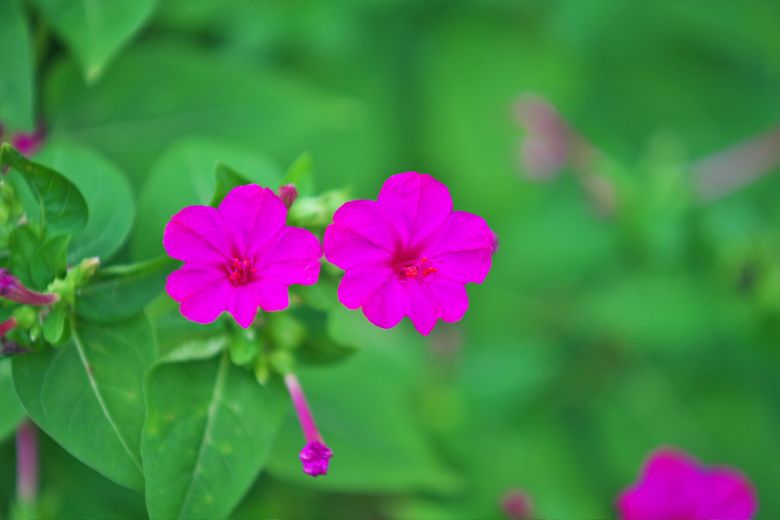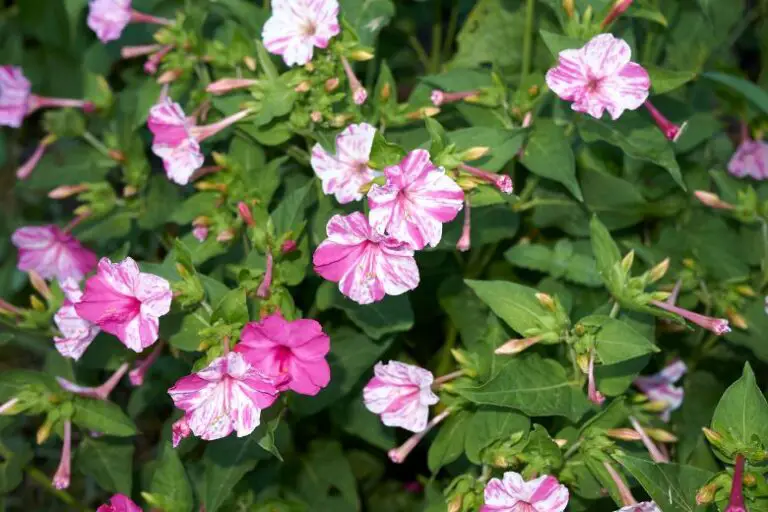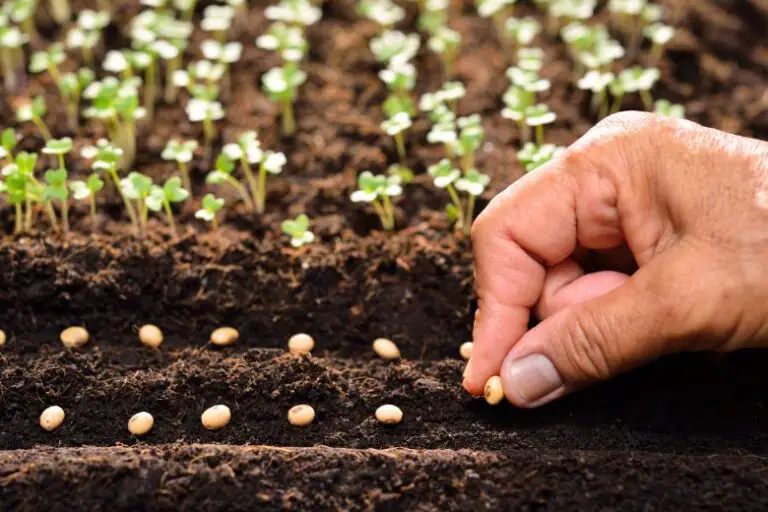How long does it take for Mirabilis Jalapa cuttings to root
Mirabilis Jalapa, commonly known as the Four O’Clock Flower, is a beautiful flowering plant that belongs to the Nyctaginaceae family. With its vibrant blossoms and ability to thrive in various climates, Mirabilis Jalapa is a popular choice among garden enthusiasts. If you wish to propagate this plant, taking cuttings is an effective method. In this article, we will explore the process of rooting Mirabilis Jalapa cuttings and discuss how long it typically takes for them to develop roots.
Understanding Mirabilis Jalapa
Mirabilis Jalapa is native to tropical and subtropical regions, and it is known for its trumpet-shaped flowers that bloom in the late afternoon or evening, hence its common name, Four O’Clock Flower. The plant can reach a height of 2 to 4 feet and has a bushy growth habit with green foliage. There are various cultivars available, each offering a unique color palette, including shades of red, pink, yellow, white, and even bicolor combinations.
To successfully propagate Mirabilis Jalapa, it is essential to have a good understanding of its growth habits and environmental requirements. This plant thrives in full sun to partial shade and prefers well-drained soil. It can tolerate a wide range of soil types, including sandy and loamy soils.
Propagation through Cuttings
Using cuttings for propagation offers several advantages, such as preserving the desirable traits of the parent plant, ensuring genetic uniformity, and accelerating the growth process. When it comes to Mirabilis Jalapa, taking cuttings is a reliable method for creating new plants that are identical to the parent plant.
The best time to take Mirabilis Jalapa cuttings is during the spring or early summer when the plant is actively growing. At this time, the stems are flexible and more likely to root successfully. It is recommended to select healthy stems that are free from diseases or pests.
Preparing Mirabilis Jalapa Cuttings
To prepare Mirabilis Jalapa cuttings, start by taking a sharp, sterile knife or pruning shears and make a clean cut just below a leaf node. Each cutting should be around 4 to 6 inches long and have at least two sets of leaves. Remove the lower set of leaves to expose the node, as this is where the roots will develop.
Although using a rooting hormone is optional, it can promote faster root development. Simply dip the cut end of the stem into a powdered or gel-based rooting hormone before inserting it into the rooting medium.
Rooting Process
For successful rooting of Mirabilis Jalapa cuttings, certain conditions need to be met. The rooting medium should be well-drained and rich in organic matter. A mix of peat moss, perlite, and vermiculite is often recommended. Place the cuttings in the rooting medium, burying them about an inch deep.
Moisture and humidity are crucial factors during the rooting process. Keep the cuttings consistently moist but avoid overwatering, as it can lead to rotting. Covering the cuttings with a plastic dome or placing them in a greenhouse-like environment helps maintain high humidity levels, which promotes root development.
Rooting Timeframe
The time it takes for Mirabilis Jalapa cuttings to root can vary depending on several factors. Generally, it takes around 2 to 4 weeks for the first signs of root development to appear. However, variations in environmental conditions, such as temperature and humidity, can affect the rooting timeframe.
Warmer temperatures and higher humidity levels tend to expedite the rooting process. On the other hand, cooler temperatures and lower humidity may lengthen the rooting duration. It’s essential to be patient and monitor the cuttings regularly for signs of root growth.
Care and Maintenance during Rooting
During the rooting period, it is crucial to provide the cuttings with proper care and maintenance. Water the cuttings regularly, keeping the rooting medium moist but not saturated. Misting the cuttings with water once or twice a day helps maintain the required humidity levels.
Protect the cuttings from extreme temperatures. Avoid exposing them to direct sunlight, as it can cause excessive drying or scorching. Similarly, keep them away from cold drafts or frost, which can damage the delicate roots.
Transplanting Rooted Cuttings
Once the Mirabilis Jalapa cuttings have developed a healthy root system, it’s time to transplant them into individual pots or garden beds. Look for indications of root growth, such as visible roots through the drainage holes or resistance when gently tugging the cutting.
Carefully remove the rooted cuttings from the rooting medium and gently plant them in well-drained soil. Maintain regular watering until the plants are established, and gradually acclimate them to outdoor conditions if they were rooted indoors.
Frequently Asked Questions (FAQs)
FAQ 1: Can Mirabilis Jalapa cuttings root in water?
Yes, Mirabilis Jalapa cuttings can root in water. Simply place the cuttings in a container with water, ensuring that at least one node is submerged. Change the water regularly to prevent stagnation and monitor the development of roots.
FAQ 2: How often should I mist the cuttings during rooting?
Mist the cuttings once or twice a day during the rooting process to maintain adequatehumidity levels. However, be cautious not to over mist, as excessive moisture can lead to fungal diseases.
FAQ 3: What is the success rate of Mirabilis Jalapa cuttings?
The success rate of Mirabilis Jalapa cuttings can vary depending on various factors such as environmental conditions, care, and the health of the parent plant. With proper care and suitable conditions, the success rate can be quite high, ranging from 70% to 90%.
FAQ 4: Can I propagate Mirabilis Jalapa from leaf cuttings?
While it is possible to propagate Mirabilis Jalapa from leaf cuttings, it is not the most reliable method. The chances of successful rooting and plant development are higher when using stem cuttings with nodes. Leaf cuttings may take longer to root and establish, and the success rate can be lower.
FAQ 5: Should I prune the parent plant before taking cuttings?
Pruning the parent plant before taking cuttings is not necessary but can be beneficial. Trimming back the plant encourages new growth and enhances branching, resulting in more suitable stems for taking cuttings. Pruning also helps maintain the overall health and shape of the parent plant.
Conclusion
Rooting Mirabilis Jalapa cuttings is an effective way to propagate this beautiful flowering plant. By following the proper techniques and providing the right conditions, you can successfully root cuttings and grow new plants. Remember to be patient during the rooting process and monitor the cuttings regularly for signs of root development. With time and care, you’ll be rewarded with healthy Mirabilis Jalapa plants that will bring vibrant colors to your garden







